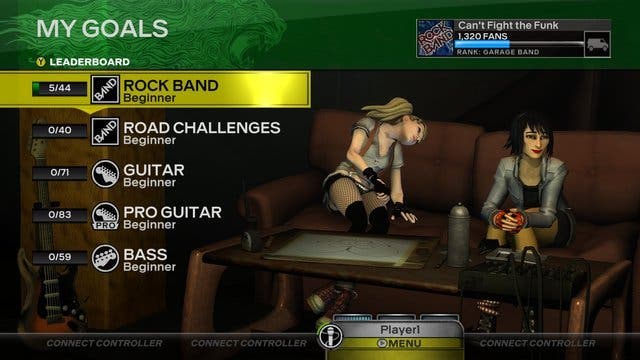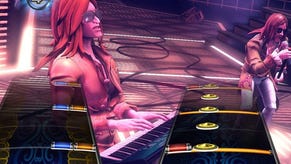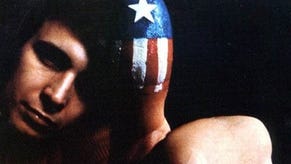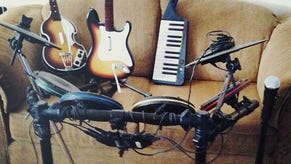Rock Band 3
MIDI life crisis.
Here's a little insight into the world of games journalism for you. When previewing a game based on a presentation at a press event – especially if that game is a sequel – you can normally count the number of important pieces of information you need to convey on the fingers of one hand.
The rest of your word count will be fleshed out with writerly "impressions", historical context, jokes, quotes from the International Brand Manager, a contrived introduction and, if you're feeling brave, a little light analysis. Stick "We'll just have to see how things turn out when it's released later this year" on the end. Job done.
Things are going to be different with this preview of Rock Band 3. Apologies if it reads like a laundry list – I had to be restrained from using bullet points – but it's out in a couple of weeks and this is no time for fripperies.
That's because Rock Band 3 is an astonishingly feature-packed and comprehensive piece of software (and, for that matter, hardware). Harmonix, admitting Rock Band 2 was just "polish" and "we haven't done a series update since the first game", has thought of everything you could possibly want, and a few things you would never have dreamed of. It's spent three years putting the game together and more money on it than on any previous project. Rock Band 3 is immense. It is the über music game.
I've wasted too many words already. We've got work to do.
Songs? There are 83 new ones on the disc, covering dadrock classics (Bohemian Rhapsody, Freebird), metal past and present (Slipknot, Dio) and a spot of pop dilettantism (Amy Winehouse, Roxette's The Look).
Rock Band 3 is backwards-compatible with the entire Rock Band library, supporting disc import from the two previous games and, of course, the store. That's 2000 songs at launch, then. Two thousand.
Instruments? The headlines are the new keyboard, the 100-button Pro guitar, the real guitar (yes, an actual functioning electric guitar that also works as a game controller), a Pro drum kit with three cymbals, MIDI instrument support, three-part vocal harmonies and compatibility with all legacy equipment ever released for Rock Band and its sire and rival, the Guitar Hero series. More on most of this later, but for now let's point out that 63 of the new songs feature a keyboard part and all of them support Pro mode.
What's Pro mode? In a way, it's what Harmonix has been striving for since it released Frequency almost a decade ago: a fusion of gaming and musicianship that teaches you how to play real instruments and actual musical parts. It discards the five-button shorthand of music games for full fingering and notation of guitar, bass and keyboard parts (naturally it has less impact on singing and drums).
This isn't quite as intimidating as it sounds. There are primers and tutorials included that teach basic techniques and are, Harmonix reckons, equivalent to "the first couple of weeks" of musical instrument lessons. Pro mode also has its own full difficulty scale, starting with a slow-paced Easy setting that only asks you to play some of the notes – it's just that you'll have to play the notes, or chords, themselves.

Pro mode effectively doubles the size of the game, offering completely different transcriptions and a discrete difficulty progression for each song. There's now a wide chasm of difficulty between, say, Normal Easy and Pro Hard, but players at both levels can still happily play and enjoy songs together.
Playing Pro means using the full two-octave range and semi-tones of the wireless, 25-key keyboard (£70) put together by Rock Band's new hardware partner Mad Catz. On Normal, you just use five colour-coded keys. The full keyboard also has colour-coded sections to help you break down the detailed Pro notation.
Manufactured at the Roland factory, the keyboard's a light but solid little unit that can be placed on a stand (£25) or worn with the supplied strap, keytar-style. They keys are velocity-sensitive and have superb responsiveness and feel; there's also a pitch-bending touch-sensitive pad on the neck along with an overdrive button (or you can opt for a separate pedal).
It has a headphone socket and is a fully-functioning MIDI keyboard that can also be used with any standard music equipment or software. Conversely, after launch, you'll be able to purchase Mad Catz's £40 MIDI Pro Adapter to use your own MIDI keyboard with the game (or MIDI drum kit, or certain MIDI guitars). It's a small box with a belt clip and the appropriate console navigation buttons.









